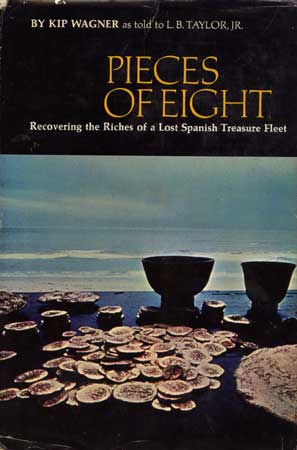The 1715 Spanish Plate Fleet Treasure, Florida, USA
On July 31st, 1715 a hurricane struck the Florida coast, sinking 10 of the 11 ships that made up the plate fleet of 1715. The plate fleets carried the Quinto, or royal fifth, a 20 percent tax on gold, silver and other valuables traded in new world.
The loss of the 1715 plate fleet was probably the largest loss of treasure at sea in all of maritime history.
A beachcomber named Kip Wagner, a resident of Sebastian Creek on the Florida coast, walking the shore after a major storm discovered a coral encrusted lump of coins, all dated 1714. After showing his find to another man, Kip Kelso, a search of library of congress was undertaken to see if more could be learned of the location of the wrecked fleet from contemporary documents.
At the library of congress, Kelso found a book called A Concise Natural History of East and West Florida, by Bernard Romans. Written in 1775, only 60 years after the destruction of the plate fleet of 1715, Romans had visited Sebastian Creek and learned the exact location of the wrecked fleet from the natives who lived there:
'Opposite this river [Sebastian Creek], perished, the Admiral commanding the plate fleet of 1715, the rest of the fleet fourteen in number, between this and the bleach yard'
Armed with this new information, Kip Wagner took to the sea on an inflatable tire inner tube and immediately found the 1715 fleet, their cannon laid bare by the same storm that had washed up the clump of coins he had found on the beach.
After recruiting a team of divers (including a young Mel Fisher[1]), salvage of the wrecks began in earnest, thousand of coins and artefacts worth countless millions of pounds were uncovered by Wagner's team.
Salvage operations continue at the site to this very day[2].
[1] Mel Fisher, the most successful treasure hunter of all time, not only worked on the salvage of the 1715 plate fleet, but went on to discover and salvage the richest treasure ships ever discovered, the Nuestra Se�ora de Atocha (Our Lady of Atocha), and the Santa Margarita, both of which sank off the Marquesas Cays, Florida in a hurricane in 1622.
[2] Detectorists wanting to search these beaches be warned - the rights to search and recover items from these locations belong to a salvage company. Detect on them without the proper permission at your peril.
Further Reading

Pieces of Eight, Kip Wagner and L. B. Taylor, Dutton 1966.
